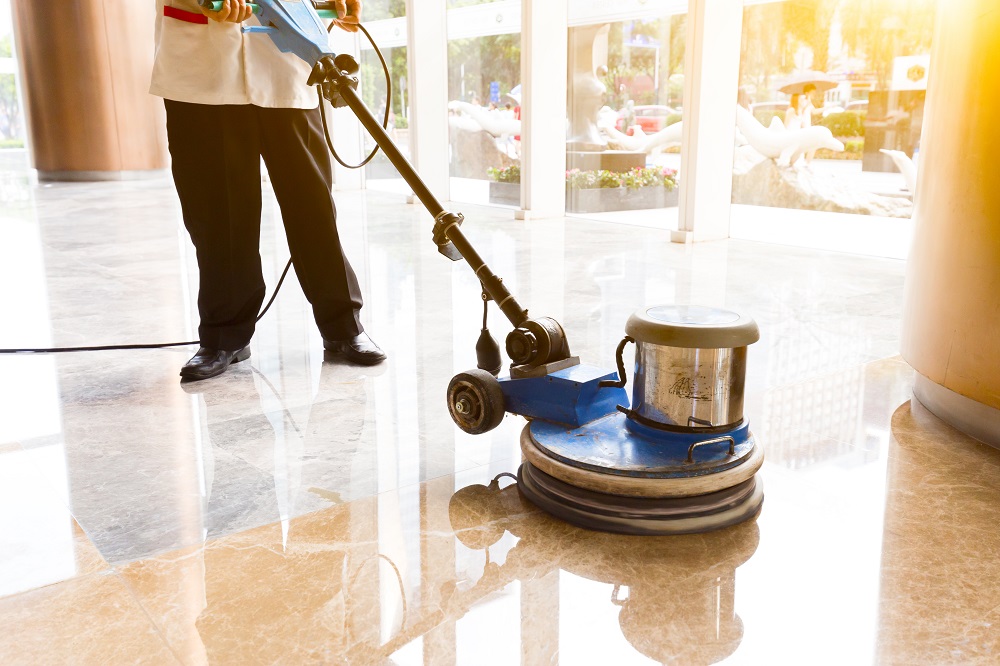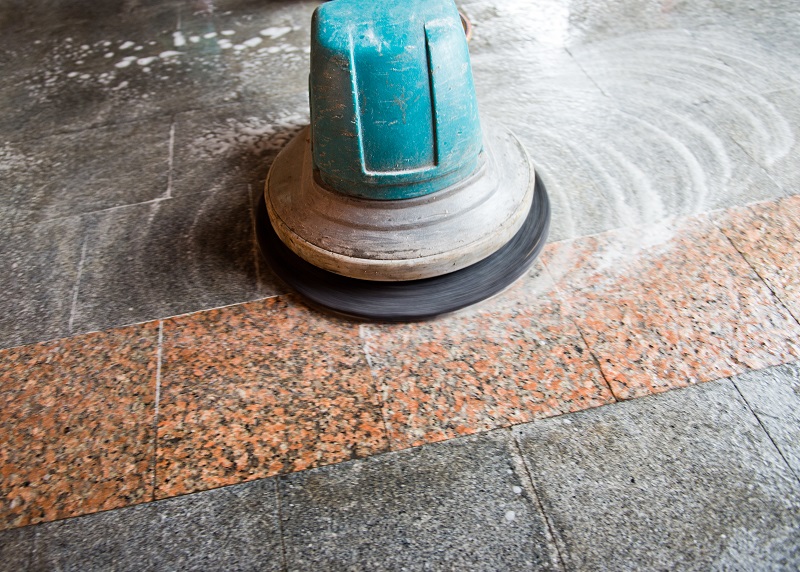Steps to Achieve Desired Results in Concrete Floor Polishing

You can use either the dry or wet methods in order to polish concrete floors, but the net result should be as desired. To achieve this result in floor polishing using either of the two methods generally used to polish floors must be known by you and the pros and cons of each of these methods along with the significant and detailed difference between the two.
Dry polishing is the most commonly used method in the industry due to the fact that it is faster and more convenient. It is also very environmentally friendly. On the other hand, the wet polishing method uses water during the polishing process in order to cool down the diamond abrasives. This also eliminates grinding dust because the water used acts as a lubricant thereby reduces friction which in turn increases the life of polishing abrasives.
However, the main disadvantage of the wet method of floor polishing is the left behind debris created during the process. It creates an incredible amount of slurry that must be collected and disposed of properly to ensure safety to the environment. As dry polishing requires no water the polisher is more focused on the containment of dust that the polishing system vacuums up directly which results in the reduction of the amount harm done to the environment.

The Steps Followed
There may be several floor polishing contractors that will use a combination of both the methods for floor polishing to ensure better results. In such type of combination method dry polishing is done initially to remove the extra concrete. After making the surface smooth wet polishing must be started when the metal is changed to finer resin bond diamond abrasives. The steps followed are:
- Removal of existing coatings by using 16 or 20 grit diamond abrasive
- Sealing of cracks and joints using semi-rigid filler or with an epoxy
- Grinding with a 30, 40, 80 and 150 grit metal-bonded diamond
- Applying chemical hardener to make the concrete denser
- Polishing with a 100, 200, 400 and 800 grit resin-bond diamond sometimes in a combination of two grits as well
- Finishing with a 1500 or 3000 grit resin-bond diamond depending on the sheen level desired.

An optional step of applying a stain guard after floor polishing may also be followed to protect the surface and make it easier to maintain.
Ways to Achieve
To go about the process of floor polishing firstly the floor must be cut with coarse diamonds. This must be done to remove all high spots and to ensure a levelled floor. The steps mentioned above should be followed after that to ensure better results.
However, there may be a variation to the above process followed in which cutting can be done to reduce up to half of the height of the higher peaks. It must be started with medium coarse diamond grit, but the machine should be able to ride up and over the small bulges on the floor. This method is a little bit more expensive and a little bit less in aggregate.
There is also a third alternative method to produce a honed surface and a better result in floor polishing. In this method, you should start with moderately fine diamonds and polish the top of the surface. Care must be taken not to remove much of the top cement surface and therefore this process should be followed after the hardening of the surface has been done.

Tips to Seal Surface
Lastly, for a polished look, the surface must be ground with coarse diamonds followed by fine diamonds prior to coating it with a clear sealer. Sealing is essentially required for surfaces that are exposed to grease, oil, dust and chemicals. A pump-up sprayer and a proper burnish is required in the end to achieve maximum shine and sheen.